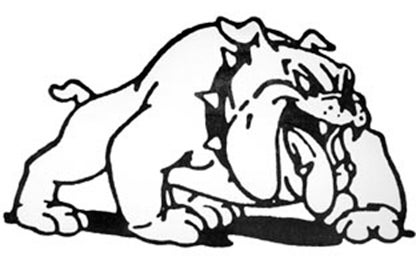Young people need to be encouraged to enjoy the great experience of the outdoors
Published 6:00 am Sunday, January 26, 2014
Column: Woods & Water, by Dick Herfindahl
The cold weather this winter seems to be fuel for conversation. The cold keeps hanging around, and if it warms up, it snows just enough to make shoveling almost a daily event.
I always find it comforting to see the tracks of critters in the snow around my yard, and we are definitely not lacking for squirrel and rabbit tracks in the neighborhood. I’ve always found something peaceful about watching as the snow swirls past the window on a moonlit winter’s night. Whenever that happens, my thoughts drift back to my childhood when I would be curled up under the covers in my upstairs bedroom of our little house reading a Jim Kjelgaard book. His books gave the perspective through the eyes of the animal and were written to capture the imagination of young perspective outdoorsmen. This fueled my imagination to the point where I would try to imagine that those critter tracks were leading to a cozy little den somewhere under the snow.
As a kid, I spent many moonlit winter nights outside sledding or playing in a snow fort that had been constructed by us kids. I don’t know how many times we tried to build an igloo like we’d seen in pictures of the Eskimos of the far north. I don’t believe we ever completely mastered the roof, but we were using blocks of snow and not blocks of ice. This on the other hand didn’t stop us from trying, and that was half the fun. I always enjoyed playing outside in the moonlight of a winter’s night better than during the day. Recently after shoveling snow in the below-zero temperatures, my fingers became cold to the point that when I went indoors to warm up they started to hurt. This brought back childhood memories of the pain I experienced while warming up in front of the heat register after playing outside just a little too long.
Panel explores issues affecting state’s hunting, fishing tradition
Minnesota’s hunting and fishing tradition is facing unprecedented demographic challenges that will require new approaches to address declines in participation rates.
That’s the essence of a new report compiled by a panel of hunting and fishing interests convened by the Minnesota Department of Natural Resources and Minnesota Outdoor Heritage Alliance.
“Minnesota is in the enviable position of having hunting and angling participation rates double the national average,” said Tom Landwehr, the DNR commissioner. “Yet challenges are ahead. That’s because young Minnesotans aren’t hunting and fishing at the levels of previous generations. Longtime baby boom hunters and anglers are destined to drop out, and future population growth will be driven largely by ethnic cultures that do not have long-held Minnesota-based hunting and fishing traditions.”
Hunting and fishing are important to the state’s economy. Minnesota hunters and anglers spend $3.3 billion in out of Minnesota, according to the U.S. Fish and Wildlife Service’s 2011 national survey of hunting, fishing and wildlife recreation. Hunting and fishing support 48,000 Minnesota jobs and have the additional benefits of connecting people with nature, promoting conservation, and providing healthy outdoor exercise.
About 28 percent of Minnesotans age 16 and older fish, and 12 percent hunt. Since 2000, Minnesota experienced a 12 percent decline in hunting and fishing license rates as the population grew from 4.9 to 5.3 million. Actual license sales have stayed stable at 1.5 million anglers and 570,000 hunters.
A desire to sustain the state’s hunting and fishing tradition prompted Landwehr and MOHA to convene the Commissioner’s Council on Hunting and Angling Recruitment and Retention. This stakeholder council — comprised of hunting, angling and recreation interests — met several times during 2013 and issued a report of its findings.
C.B. Bylander, the outreach chief for the DNR’s Fish and Wildlife Division, said the council’s work was valuable. “The outdoors community recognizes the need to design and deliver more effective public and private sector recruitment and retention programs,” said Bylander. “By reviewing research and collectively applying this knowledge we can improve.” Council members included representatives from Ducks Unlimited, Trout Unlimited, National Wild Turkey Federation and other outdoor interests.
Recruitment recommendations included: developing and supporting after-school clubs for youth; an “I am a hunter/angler” marketing campaign aimed at young adults; learn to hunt and fish workshops for young adults; and family-oriented hunting and fishing awareness and skill workshop events.
This is why events like the Fountain Lake Sportsman’s Take a Kid Fishing and other events by various area sportsmen’s clubs are so important to the future of our outdoors heritage.
I’ve heard reports that the fish on Pickerel Lake are swimming just under the ice, and in some instances are coming up to the surface in open fishing holes presumably searching for oxygen. On the same token, big walleye have been spotted swimming with the carp below the dam. The DNR checked the oxygen levels in both lakes and said it is still satisfactory. Hopefully we won’t have a winter kill like we experienced a few years ago on Albert Lea Lake. This would be sad because Pickerel Lake has become a very good fishing lake in a relatively short period of time.
Until next time, stay warm and enjoy the beauty of winter.
Please remember to keep our troops in your thoughts and prayers because they are the reason that we are able to enjoy all the freedoms that we have today.
Dick Herfindahl’s column appears in the Tribune each Sunday.



